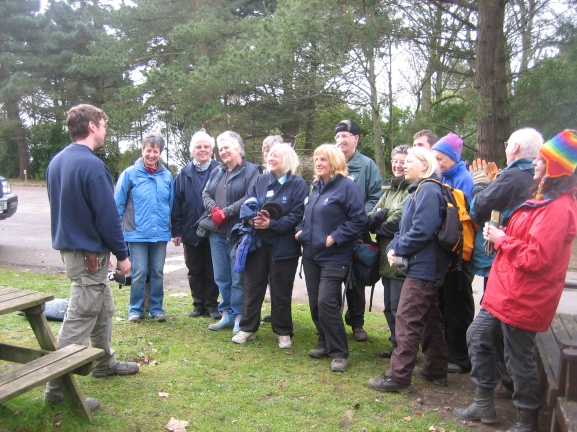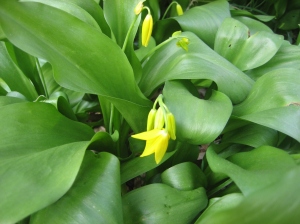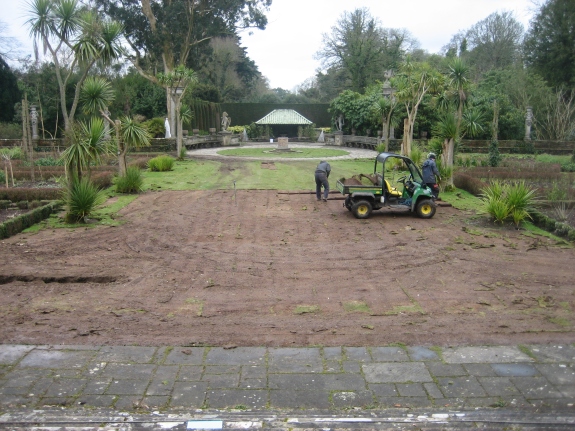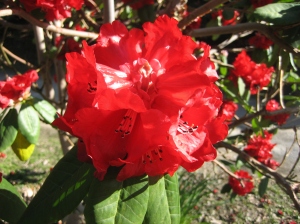1 September 2011
We have just completed a long drain in the Lily Wood which I hope will prevent the area flooding, which it has ruinously for the last two or three winters. As a result, many of the more sensitive plants, not least of all Lilies and Meconopsis have become impossible to grow in those inundated areas. More alarmingly, many of the exotic trees which form that crucial shelter-belt between the garden and Strangford Lough have been killed. Douglas Fir, Giant Redwoods as well as native Oak and Beech.
We will in the process upgrade a service track, sowing the stony surface with a shade-bearing mix, which will form a circuit walk, running from the Memorial Glade back around back to the middle of the Lily Wood. We will replant as much as possible the shelter-belt with Oak, Ash, Western Hemlock and under-plant with Holly and Hazel. I want to work in a few more sturdy exotics and natives: Small-leaved Lime, Walnut, North American Walnut, Hungarian Oak, Wild Service Tree and Field Maple especially on the leeward edge.
Next year, as funds allow, we will put a further lateral drain obliquely across the Memorial Glade to capture the run-off from the drive and Mc Comb’s Hill. This will empty into this year’s main drain. While we are disrupting the Memorial Glade, we might as well create an “eye-catcher” down there to induce visitors to make the effort.

The Cromlech moved to make way for a landing strip in the 1930s will be moved and reconstructed as is, to the end of the Memorial Glade. I will be replanting and re-shaping the lawns of the Memorial Glade this autumn and replanting in late winter. From the Cromlech, visitors can then meander back through the new planting and grassy path back to the Lily Wood.
I will be planting many bold ribbons of Lilies again in Lily Wood this autumn and Danielle has sown many blue Meconopsis from Averil at Rowallane which will not move down to Lily Wood until late winter 2013.
NP 01.09.2011
Click on the names of the trees and plants mentioned in this post to learn more about them:
Lilies, Meconopsis, Douglas Fir, Giant Redwood, Oak, Beech, Ash, Western Hemlock, Holly, Hazel, Small-leaved Lime, Walnut, Hungarian Oak, Wild Service Tree, Field Maple











